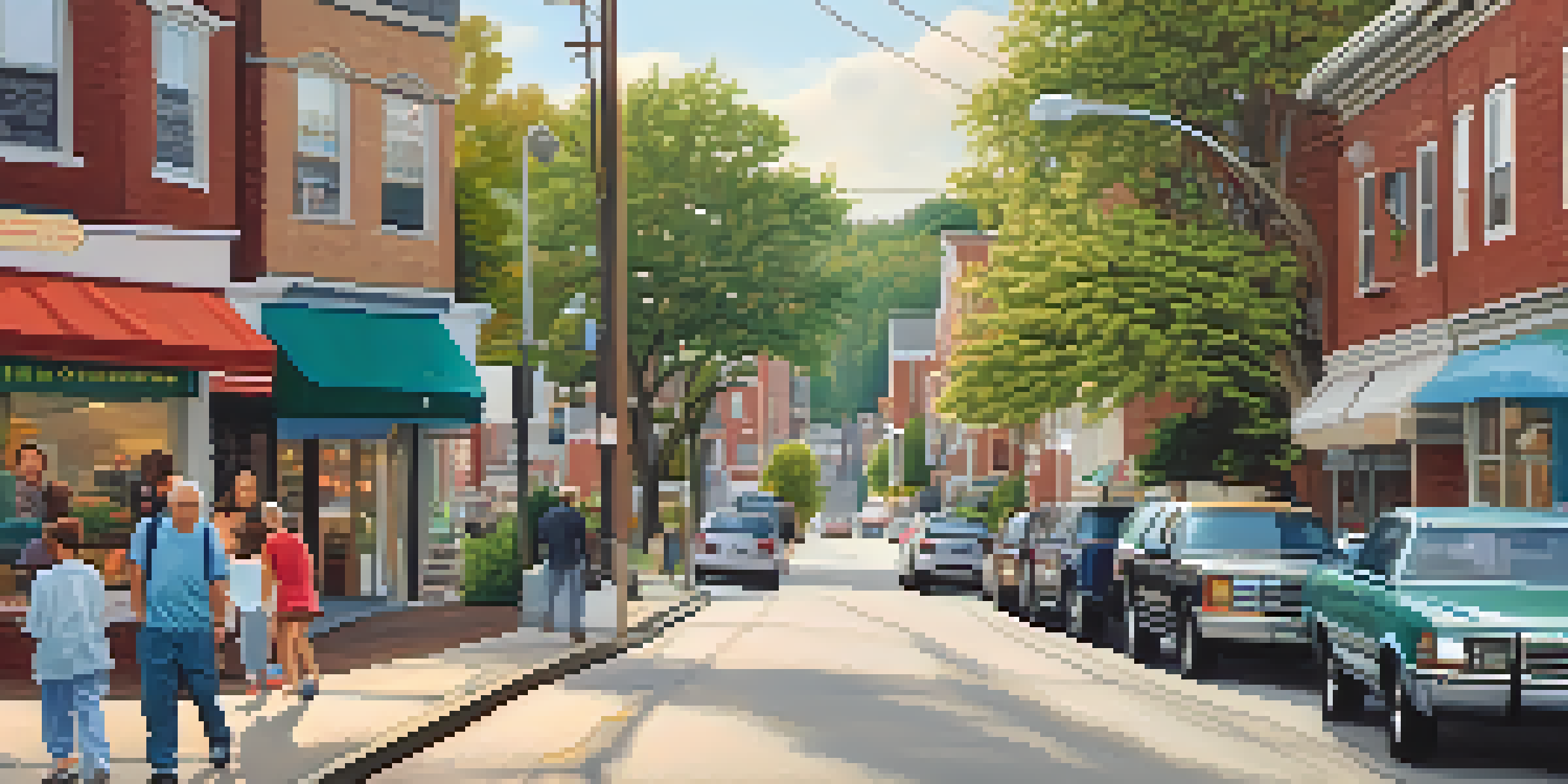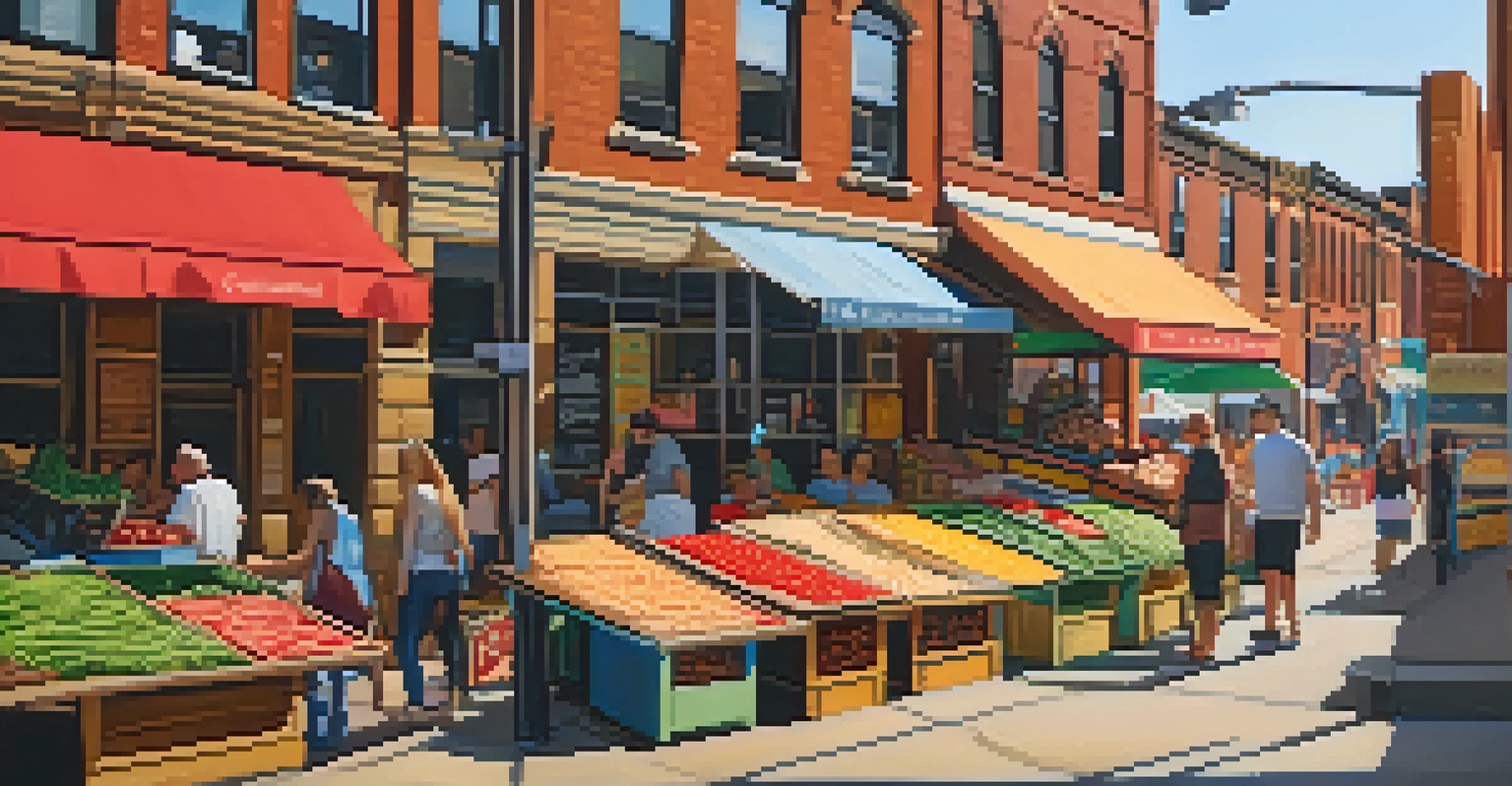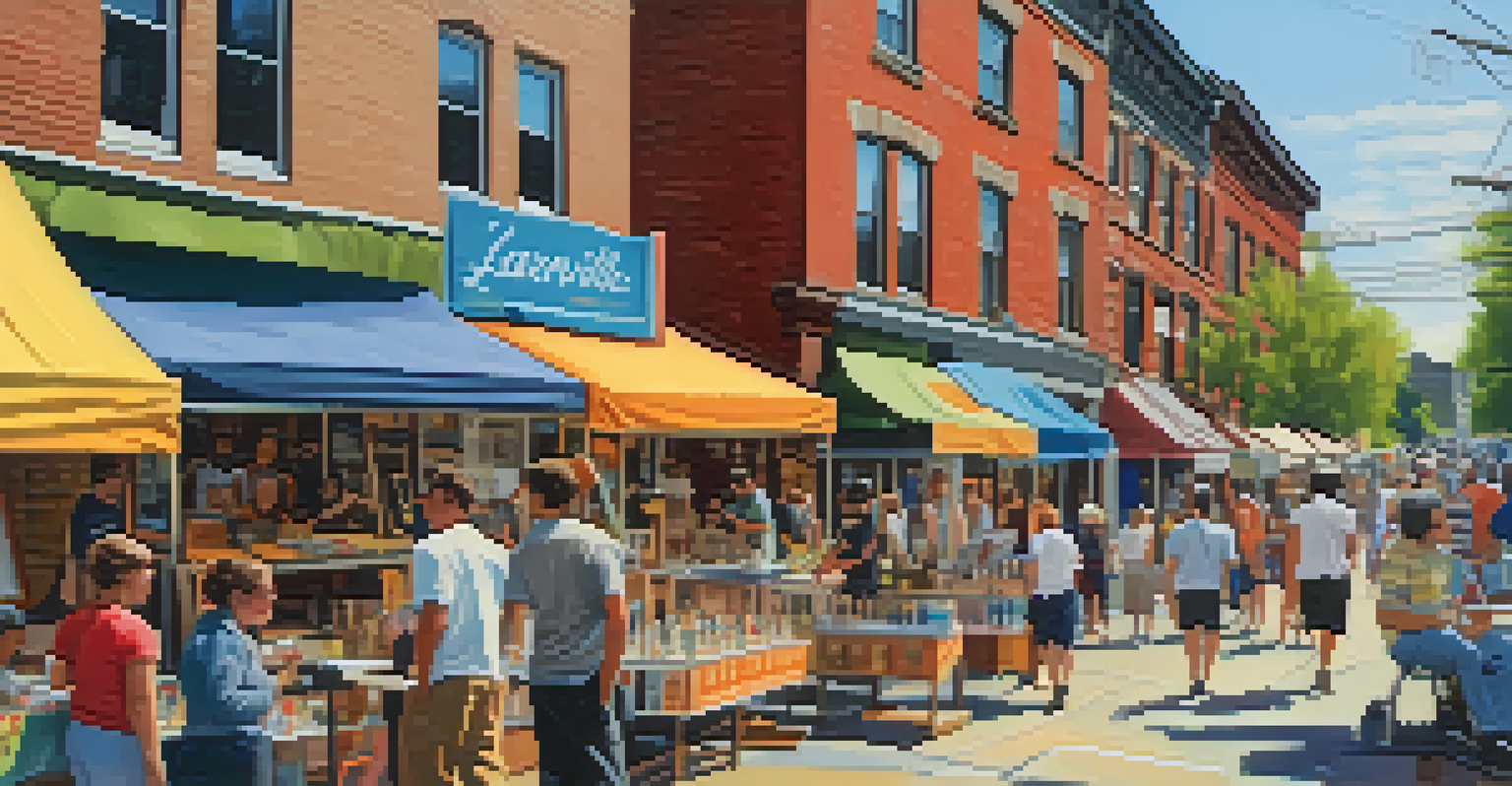Pittsburgh's Neighborhoods: A Journey Through Cultural Diversity

The Historical Roots of Pittsburgh's Neighborhoods
Pittsburgh's neighborhoods are like chapters in a rich storybook, each with its own unique history. Founded in the 18th century, the city grew as a melting pot for immigrants from various backgrounds, including German, Irish, Italian, and Polish. This influx of diverse cultures not only shaped the architecture and layout of the neighborhoods but also enriched the local traditions and culinary scenes.
A city is not just a collection of buildings, but a collection of stories.
Take, for example, the Strip District, which showcases a mix of markets, restaurants, and shops that reflect the city's immigrant roots. Here, you can find everything from handmade pasta to fresh kielbasa, a testament to the culinary influences that have taken hold. The vibrant atmosphere is a reminder of the city’s evolving identity, where each community has left its mark.
As you explore these neighborhoods, it's fascinating to see how the historical roots continue to influence contemporary life. Festivals, parades, and cultural events celebrate this diversity, inviting everyone to partake in the ongoing story of Pittsburgh.
Squirrel Hill: A Hub of Jewish Culture
Squirrel Hill stands out as a vibrant hub of Jewish culture and community in Pittsburgh. Known for its rich Jewish history, this neighborhood is filled with kosher restaurants, synagogues, and cultural organizations. The annual Pittsburgh Jewish Film Festival, for instance, draws attention to Jewish artists and stories, showcasing the community's contributions to the arts.

Walking through Squirrel Hill, one can’t help but admire the beautiful architecture, from quaint homes to the impressive Chatham University campus. The local shops, often family-owned, add a personal touch to the shopping experience, making you feel like a part of the community. You'll find everything from unique gifts to traditional Jewish delicacies.
Pittsburgh's Cultural Diversity
Pittsburgh's neighborhoods reflect a rich tapestry of cultural influences from various immigrant communities that have shaped the city's identity.
Moreover, Squirrel Hill's commitment to inclusivity and social justice makes it a welcoming space for everyone. This neighborhood exemplifies how cultural diversity can foster understanding and unity, creating a vibrant tapestry of life.
Lawrenceville: A Blend of Old and New
Lawrenceville is a neighborhood that beautifully marries its industrial past with modern creativity. Once a center for manufacturing, the area has transformed into a thriving enclave of artists, entrepreneurs, and families. The presence of art studios, craft breweries, and trendy boutiques gives Lawrenceville a youthful and dynamic vibe.
Diversity is the one true thing we all have in common. Celebrate it every day.
One of the highlights of Lawrenceville is the annual Lawrenceville Art Festival, which showcases local artists and their works. This event draws crowds from all over the city, celebrating creativity and community spirit. It's a vivid reminder of how the neighborhood has evolved while still honoring its historical roots.
Additionally, the eclectic mix of residents adds to Lawrenceville's charm. From young professionals to long-time locals, the community thrives on diversity, making it a great place to explore, meet new people, and appreciate the arts.
The Cultural Mosaic of the North Side
The North Side is a cultural mosaic that offers a glimpse into Pittsburgh's diverse communities. Home to the iconic Andy Warhol Museum and the Children’s Museum, this neighborhood embraces its artistic and familial spirit. The rich history of immigrants from various nationalities has shaped the North Side, contributing to its vibrant cultural scene.
More than just museums, the North Side hosts various ethnic festivals throughout the year, celebrating its diverse heritage. The Mexican War Streets and Allegheny Commons Park are perfect spots for these gatherings, where food, music, and dance come together to create a lively atmosphere. It's a fantastic opportunity to experience different cultures up close.
Celebration of Unique Heritage
Festivals and events across neighborhoods like Squirrel Hill and Bloomfield highlight and celebrate the distinct cultural traditions and contributions of their residents.
The North Side is not just about the past; it is also a thriving community where modern life and tradition coexist beautifully. From local eateries to historic landmarks, this neighborhood invites you to explore its multifaceted identity.
The Italian Influence in Bloomfield
Bloomfield, often referred to as 'Little Italy,' is a testament to Pittsburgh's Italian heritage. The neighborhood is dotted with Italian restaurants, bakeries, and markets that celebrate this rich culture. Every summer, the Bloomfield Little Italy Days festival brings the community together to enjoy Italian food, music, and art, showcasing the vibrant traditions of this close-knit neighborhood.
Walking through Bloomfield, the aroma of fresh pasta and pastries wafts through the air, inviting you to stop by local establishments. Whether you’re enjoying a slice of pizza or a cannoli, you can taste the love and tradition that goes into every dish. This culinary experience is not just about food; it's about sharing stories and memories over a meal.
In addition to its culinary offerings, Bloomfield fosters a sense of community through various events and activities. From street fairs to neighborhood clean-ups, residents come together to celebrate their heritage and create lasting connections with one another.
Cultural Celebrations in the Hill District
The Hill District is renowned for its significant role in African American history and culture in Pittsburgh. Once the heart of the city’s jazz scene, it was home to legendary musicians like Duke Ellington and Billie Holiday. Today, the Hill District continues to celebrate its rich cultural heritage through various events and festivals that honor its past.
One notable event is the Hill District Arts Festival, which showcases local artists, musicians, and performers. This celebration of creativity not only highlights the talent within the community but also fosters a sense of pride and unity. It’s a wonderful opportunity for residents and visitors alike to experience the distinct cultural expressions that define the Hill District.
Community and Inclusivity
Pittsburgh's neighborhoods foster a sense of community and inclusivity, inviting diverse groups to connect and share their stories through various local initiatives.
Additionally, community organizations work tirelessly to preserve the history and advocate for the needs of residents. Through educational programs and outreach initiatives, they aim to ensure that the Hill District remains a vibrant and thriving community for future generations.
Understanding the Influence of the South Side
The South Side is a lively neighborhood that boasts a rich history intertwined with Pittsburgh's industrial past. Once a bustling steel mill area, it has transformed into a vibrant locale filled with bars, restaurants, and shops. The South Side Works, a former industrial site, now serves as a mixed-use space that reflects the neighborhood's evolution over time.
The South Side is well-known for its nightlife, particularly along Carson Street, where you can find a diverse array of entertainment options. From local bands to nationally recognized acts, the music scene is alive and well, drawing residents and visitors together for a night out. This aspect of the neighborhood showcases how cultural diversity influences the local entertainment landscape.

Moreover, the South Side hosts events like the South Side Soup Contest, which celebrates local chefs and their culinary creations. This community-driven event not only promotes local businesses but also highlights the diversity of flavors that can be found in this vibrant neighborhood.
Conclusion: Pittsburgh's Cultural Tapestry
In conclusion, Pittsburgh's neighborhoods are a rich tapestry woven from the threads of cultural diversity. Each area tells its own story, shaped by the people who call it home. From the Jewish culture of Squirrel Hill to the Italian influences in Bloomfield, the city's neighborhoods reflect the vibrant heritage of its residents.
Exploring these neighborhoods offers a unique opportunity to experience a variety of cultures, traditions, and cuisines. The festivals, events, and local establishments invite everyone to be part of the ongoing narrative, celebrating the city's history while looking toward the future.
As you journey through Pittsburgh, remember that each neighborhood has something special to offer. Embrace the cultural diversity that makes this city truly unique, and you'll find that Pittsburgh is not just a place; it's a living, breathing community that welcomes all.